European NATO countries should formulate their interests and build common capabilities to secure them, thereby providing a more balanced alliance - both in capacities and interests. Moreover, we must realise that we live in a world in which we cannot choose our conflicts. Conflicts will choose us and will demand our action. To deal with opponents that exploit the hybrid environment, NATO should also embrace comprehensiveness and exploit the full scope of its strengths. We should realise that in today’s social media dominated world, perceptions are at least as important as, if not more important than, actions themselves. That requires careful synchronisation of military and non-military capabilities, both in national and transnational contexts.
Lieutenant General Ton van Loon, (ret.), and Susan Verstegen MA*
The 2019 report for the annual Munich Security Conference is significantly titled The Great Puzzle: Who Will Pick Up the Pieces? As MSC Chairman Wolfgang Ischinger observes: the liberal world order appears to be falling apart. This situation has not improved over the last year – quite the contrary. From climate protection and free international trade to respect for human rights and the inviolability of national borders: the core elements of the international order seem to be falling into pieces. And it is not clear whether anyone can, or even wants to pick them up.[1]
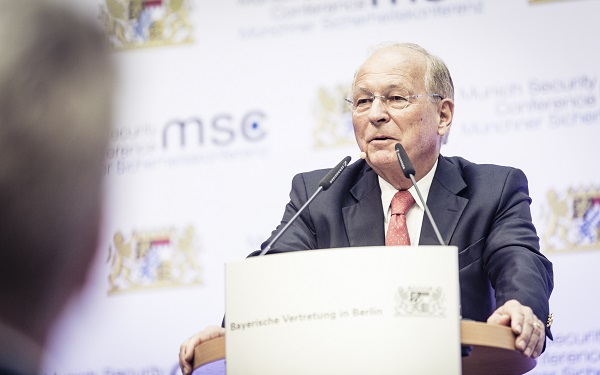
Wolfgang Ischinger, Chairman of the Munich Security Conference, warns that the ‘the liberal world order appears to be falling apart’. Photo Munich Security Conference
What we are witnessing today, is neither comparable to the Cold War nor to the era of peacekeeping. Today’s world with its focus on differences is – if at all comparable to any historic timeframe – more like the years leading up to the First World War, which saw similar divisions and chaotic power struggles in Europe. The crucial question we must ask ourselves is: how do we understand, accept, and ultimately deal with this reality? Prime Minister of the Netherlands Mark Rutte accurately described the new reality in his Churchill Lecture at the University of Zurich: ‘We all remember Francis Fukuyama’s prediction of the ‘end of history’ and – as he put it – ‘the universalization of Western liberal democracy as the final form of human government’. A quarter of a century later, we know that the end of history never arrived. Instead, in the last decade or so, we’ve been witnessing a new phase in which hard power appears to be gaining the upper hand over soft power. Today we live in a multipolar world, in which a growing number of countries and political leaders seem to believe that international relations are a zero-sum game. This means that the EU, which was built on the power of principles, is increasingly being confronted by the principles of power.’[2]
As transatlantic relations appear to be slowly deteriorating and the European Union seems more divided than ever, tensions are rising within the North Atlantic Treaty Organization (NATO) as well. While NATO’s cohesion was its centre of gravity (COG) during the Cold War era, its once seemingly unbreakable unity is starting to crack-up. 'The same goes for the European Union (EU). Even individual states find that differences are starting to overshadow commonalities. Brexit is a striking example. These divisions are problematic for many reasons, not in the least because they make NATO a more vulnerable target for hybrid threats – with dire consequences.
The first chapter of this essay outlines the elements that are crucial to our understanding of where and how Europe (and her states) is vulnerable to hybrid threats. This essay cannot fully describe all aspects of the hybrid nature of conflict as was done, for example, in Selhorst’s excellent article published earlier in the Militaire Spectator.[3] Chapter two explains why European NATO countries should regain their strategic autonomy. European governments have neglected their military domains for too long, resulting in a dangerous imbalance within NATO, that should be repaired. Chapter three discusses the subsequent measures that European NATO countries need to take in their military domains.[4] These include measures that restore the transatlantic balance in NATO, measures that guard against the new reality of hybrid threats and measures that help the alliance to manoeuvre in the complex hybrid environment. This requires a whole-of-government effort wherein the military domain is only one part of the comprehensive solution – yet an indispensable part.[5]
Threats in the hybrid environment
In March 2015, Federica Mogherini, the EU High Representative for Foreign Affairs and Security Policy, spoke of ‘the new security challenges posed by the […] combination of the use of irregular and conventional military methods, as well as elements from cyber, economic and information warfare, and political pressure.’[6] The main purpose of such hybrid warfare is to ‘keep an opponent politically, militarily and societally off balance’, thereby making the opponent more vulnerable.[7] These aspects are common to all contemporary threats to national security as they are complex and hybrid in nature.
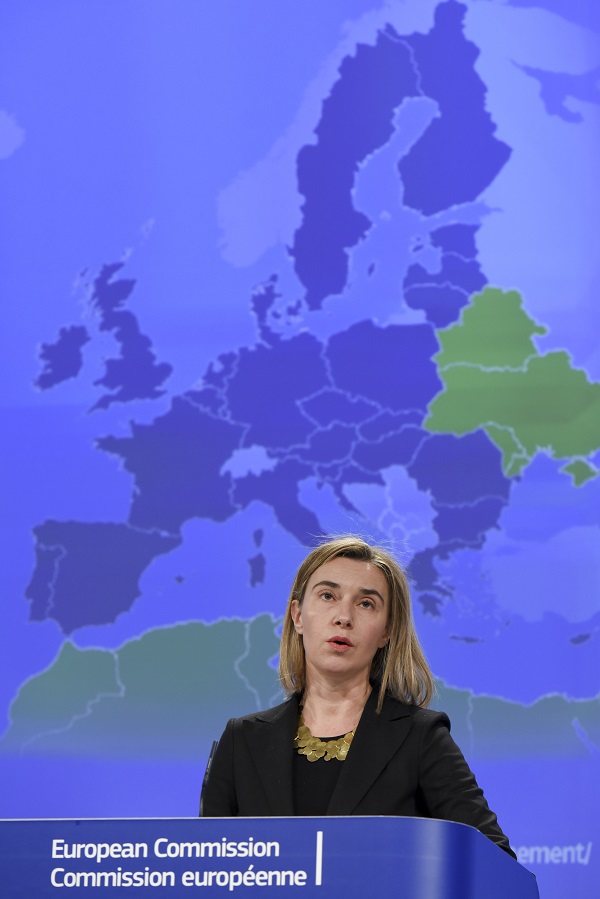
In a speech in 2015, EU High Representative for Foreign Affairs and Security Policy Federica Mogherini pointed at new security challenges posed by the combination of the use of irregular and conventional military methods. Photo European Commission, Etienne Ansotte
One tool from the hybrid toolbox that has been used to great effect is the use of influence campaigns, used to drive a wedge between populations, governments and alliances, with the aim of weakening opponents. Russia especially has been using this tool effectively, best exemplified in the alleged Russian interference in the US elections of 2016. NSA Director and Commander of US Cyber Command Michael S. Rogers described the Russian attack as: ‘This was not something that was done casually, this was not something that was done by chance, this was not a target that was selected arbitrarily. This was a conscious effort by a nation-state to attempt to achieve a specific effect.’[8] The New York Times further explained that ‘a low-cost, high-impact weapon that Russia had test-fired in elections from Ukraine to Europe was trained on the United States, with devastating effectiveness. For Russia, a state with an enfeebled economy and a nuclear arsenal it cannot use without causing an all-out war, cyber power proved the perfect weapon: cheap, hard to see coming, hard to trace.’[9] Russian involvement was also seen more recently through fake accounts that influenced the ‘yellow vest’ movement in France. Naturally, Russian authorities have denied their involvement but it is not hard to notice the bias on Russia Today’s (RT) Facebook page. Even if involvement is disavowed, the fact remains that our open societies are vulnerable to influence.
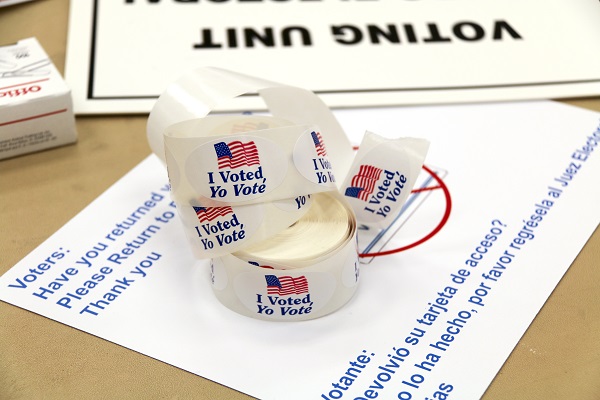
Without having to cause an all-out war, cyber power, also used for targeting foreign election processes, proved the perfect weapon for Russia. Photo Organization for Security and Co-operation in Europe
Russia’s influence on migration flows towards Europe is exemplary in this regard. Has Russia deliberately used its influence in the Middle East to weaponise migration, as former Supreme Allied Commander Europe General Breedlove suggested, or was it just a coincidental consequence of Russia’s and Syrian President Assad’s actions? The answer is difficult. In the first place, we must recognise that nothing is ever clearly attributable in the hybrid environment. Secondly, whether or not Russia has weaponised migration to harm European cohesion is not the most important question. The key question is if we can defend ourselves against weaponised migration flows, should this be the case. In the end, it is important to realise that indirect effects can have much greater impact on the opponent than direct actions, and we must start thinking about how to deal with such indirect effects.
The Russian Federation is not the only state that has acknowledged the hybrid or comprehensive nature of conflicts. Russian behaviour is perhaps clearer, but China’s new silk road (Belt and Road Initiative) also seeks to achieve strategic aims through a Chinese version of a comprehensive approach.[10] China has chosen a more subtle way to align its various instruments of power than the Russians, but that arguably makes the security risk larger rather than smaller. It is important to note that too much focus on these known opponents, thereby neglecting the Global South, flows of (climate) migrants or perhaps a proxy hybrid war, is not helpful. It is not a question of either-or: they can all potentially pose an equally serious threat.
Recent threats and developments have thus shown that NATO, the EU and even individual nations can be weakened by exploiting what is rapidly becoming a critical vulnerability of all these entities: unity itself. And it is exactly this vulnerability that smart opponents may take advantage of in the hybrid environment. In the next chapters, options that allow NATO countries to defend themselves against these threats – to manoeuvre in the hybrid environment – will be discussed.
Strategic autonomy for Europe
The re-emergence of the complex Russian threat, the arrival of an ever stronger and more self-assured China, and a whole plethora of other challenges make multilateral cooperation more relevant. For this to truly work, Europe should regain its strategic autonomy. The era during which Europe could safely hide under the US security umbrella is over. However, this does not mean they cannot remain partners. Politicians might still hope there will be a return to the comfortable (and cheap) situation under a less confrontational future US president, but that is probably an illusion. It is not just a question of money, as the US president suggests. Also the inequality in the relation between the US and its European allies is very problematic.[11] A better-balanced NATO is a stronger NATO. In this regard, there are three elements that need to be explored.
First, it must be realised that Europe has its own security interests, and therefore, it should have enough autonomy to deal with difficult situations in its own way. It is true, Europe is not a clear entity and the individual states often have very different interests. For instance, eastern European countries tend to count more on visible protection against aggressive Russian behaviour, while countries in the Mediterranean consider the instability in Africa to be a much more acute concern. However, these differences should not withhold European states to align their shared interests more carefully. National sovereignty that results in hardly any influence in the international arena because the countries individually have no sufficient weight, does not count for much. During the Cold War, keeping dialogue options open was part of the success of preventing a confrontation in Europe as it knows that keeping diplomacy going is of vital importance. This explains partly why Europe takes a different approach towards Iran than the US. European countries (and most vocally Germany) believe it is better to keep diplomatic channels open and nudge Iran to abide by its obligations, rather than ‘bullying’ the country into submission.
The same applies to the Nord Stream 2 gas pipeline project. Dependency on Russian gas is strategically not very wise, but neither is depending on oil from the Middle East or liquid gas from the US. The important word here is ‘dependence’: Europe needs to move away from cheap and easy solutions that make us vulnerable to blackmail, thus ensuring that gas cannot be used to blackmail it.[12] However, that does not mean Europe should never buy Russian gas, as there is movement in two directions: gas to the west and money to the east. Any decision not to buy Russian gas provides economic leverage on Russia. When dealing with China these considerations are even more important. It is a likely scenario that Europe gets caught up in a potential US-China trade war. Qualifying China as the enemy, thereby cutting off diplomatic channels and refusing to buy its equipment might not be in Europe’s strategic interest. This does not mean Europe should not take its main ally’s concerns seriously, but it does mean Europe should be able to make its own decisions.
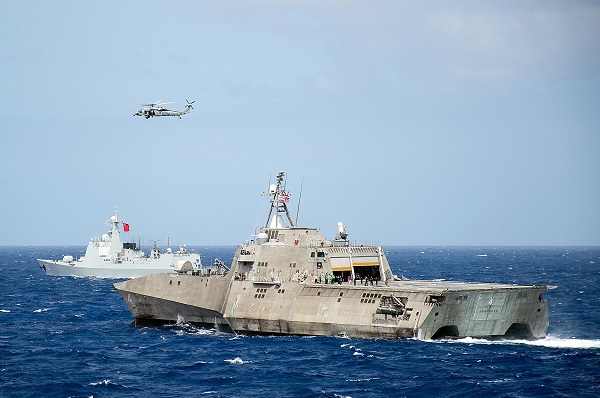
Qualifying China as the enemy, thereby cutting off diplomatic channels and refusing to buy its equipment, might not be in Europe’s strategic interest. Photo US Navy, Ryan J. Batchelder
The second element that needs to be addressed is the ratio between European and US capabilities within NATO. European countries need to start looking at the strategic challenges and realise that those can only be dealt with if the countries work together. Prime Minister Rutte has said on several occasions that he believes in a stronger European pillar in NATO. Yet, it is often suggested that more European cooperation would be detrimental to NATO, and just speaking about a European army already sets off alarm bells. However, the improvement of European military capabilities is in everyone’s interest. Why would Europe’s ability to cope with crises in its immediate backyard by means of a proper structure hamper NATO cooperation?
Thirdly, the discussion should not be just about spending money on defence. The infamous two per cent is a benchmark, and it is without a doubt important for repairing the damage done by the huge budget cuts since the end of the Cold War and for restoring the strength of NATO militaries. The end goal is not the two per cent but the development of European capabilities, primarily in areas where dependence on the US is currently the heaviest. Buying, leasing or borrowing US equipment is not the solution to the problem. The balance within NATO needs to be restored, or perhaps created and not by depending on the US defence industry.
In conclusion, Europe should develop some level of strategic autonomy, because it has its own security challenges, a different way of dealing with these challenges and because a NATO with equal partners is inherently stronger. More European cohesion does not weaken NATO. To the contrary, it can make the alliance stronger instead. That being said, more cohesion is going to be difficult, not in the least because frictions within the EU have caused the pan-European solidarity to crumble.[13] However, without closer cooperation each individual European country is just not able to secure its vital interests. It is important to look again at the core of the NATO treaty. In the words of Norwegian Prime Minister Erna Solberg: ‘For me, NATO is not just a military thing; it is also about democratic values, it is about liberal values, it is about the cooperation.’[14] The contemporary crisis within NATO could result in a stronger and better-balanced alliance, both on the European continent and in the transatlantic sphere. So, though current times are challenging for NATO, they also offer opportunities: NATO could come out of it stronger than before.

Going back to the core of the NATO Treaty, Norwegian Prime Minister Erna Solberg said the alliance is about military cooperation, but also about democratic and liberal values. Photo NATO
Military manoeuvring in the hybrid environment
As stated, hybrid warfare is not primarily aimed at defeating an enemy force or achieving geographical objectives through a military attack. On the contrary: it targets societies and all of the elements they comprise. Hybrid warfare intends to disturb the way in which societies function by attacking vital physical hubs, and most alarmingly, the public opinion of the targeted country through coordinated influencing campaigns. Especially the seams of society, often the result of domestic identity clashes, can be exploited easily – as we have already seen. Not just Russia and China, but non-state actors such as ISIS too, combine all available tools in a hybrid manner to achieve their aims.
So, in this complicated world, (hybrid) conflicts can come from a variety of directions that similarly have to be addressed by various means. If opponents use all available tools in a synchronised manner, the reply must also entail the entire spectrum of responses.[15] In this regard the military is only one important actor, whose actions need to be nested in a wider comprehensive approach. NATO defines the comprehensive approach as ‘combining political, civilian and military instruments’ and coordinated cooperation between states, international organisations and non-governmental organisations.[16] Exactly these interagency mechanisms and permanent exchanges of thought within the comprehensive approach make it suitable for manoeuvring in the multi-faceted hybrid environment. Without trying to provide a complete list of all available options, some key elements of the military role in the comprehensive approach will be discussed here, namely: the art of manoeuvring, cross-national and cross-domain cooperation, deterrence and cohesion, resilience, and cyber and information.
The art of manoeuvring
In order to manoeuvre in the hybrid environment, a fundamental change of thinking from one focused on military options to one that incorporates the whole context must take place. Next to ground manoeuvre and air manoeuvre, there is a third element that must be taken into account: information manoeuvre. It is only human to look at the problems that are visible, but in the hybrid conflict opponents are very good at manipulating information. China is a good example, masterfully hiding its intentions for the African continent. For Russia this should also be evident, as maskirovka (deception) and desinformazija (disinformation) have always been part of its doctrine. Terrorists use attacks to create fear in societies the extent of which cannot be predicted. There is a tendency to respond to terrorist attacks by going after the attacker and by setting up more security barriers, and rarely to look at the effects of fear itself in these societies. If terrorism consists of just ten per cent action and ninety per cent fear and propaganda, why then is the response mostly action and virtually no messaging?
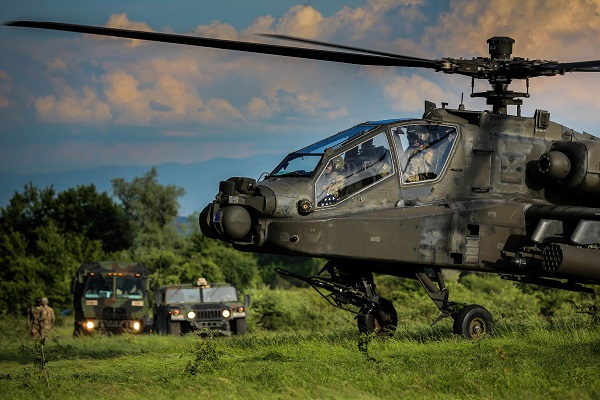
NATO conducts Noble Jump exercises, but why doesn’t it consider manoeuvring against the Russian weaknesses? Photo NATO
Looking at Russia’s threatening posture in the Baltic area, something similar is happening. NATO reacts to Exercise Zapad by doing an Exercise Noble Jump.[17] The air defence in the Kaliningrad enclave is worrying, so NATO reacts by buying more weapons to deal with these systems. Evidently, Russia would not risk a head-on battle with NATO, but it would seek to stay below the threshold, carefully avoiding Article 5. Realising all that, then why doesn’t NATO consider manoeuvring against the Russian weaknesses? The enormous gap between the riches of oligarchs around President Putin and the poverty of large portions of the Russian population are weaknesses that could easily be exploited. Just imagine a reaction to another Zapad or the next Russian incident by doing a joint exercise with the Ministry of Finance, freezing Russian oligarch’s bank accounts or not purchasing Russian gas for several months.
Likewise, imagine NATO not actually engaging in these acts, but just opting for an exercise with a fictional scenario that explores such options. Would that not have a bigger impact than simply copying our opponent? Manoeuvring in the hybrid environment is all about engaging the enemy at its weakest points. Russia thinks it has a strong hand in the hybrid game, but NATO and EU have far better cards if they stick to their own game. The same is applicable to China’s expansion towards Europe. Barriers could be set up, but an indirect approach that secures our influence and reduces the Chinese influence is probably far more effective. For example, instead of banning Huawei from the European market, but it should be made clear what the consequences are if it violates the European trust.
NATO preaches both manoeuvre warfare and a comprehensive approach in its current doctrine. Combining both, thus using all the tricks in the book, is most likely the best answer to the hybrid game of our opponents. The key is to think holistically about the strategic challenge, subsequently manoeuvring to counter the said challenge. In this intensely complex world, more energy must be spent on trying to define, as Clausewitz put it, the true nature of the conflict at hand: it is essential to address the whole context with a comprehensive answer, instead of focusing solely on the military component.
Cross-national and cross-domain cooperation
For an effective military contribution to a comprehensive approach, close cooperation with the civilian and private sectors is indispensable. The military can never work alone. Key infrastructures, such as the financial and information networks are often owned by the private sector, and border control is the purview of law enforcement agencies. When dealing with propaganda it is obvious that the independent media sector will be involved.[18] Moreover, early identification of deliberate attempts to destabilise society is crucial. For the Netherlands that would mean teaming up with, for instance, the NATO CIMIC Centre of Excellence, and research institutes such as TNO and the NATO Defence College.[19] In this respect, it is logical that the recently published Dutch army vision puts more emphasis on much closer cooperation with partners, in the national domain as well as internationally.[20]
The recently published Dutch army vision puts more emphasis on much closer cooperation with partners, in the national domain as well as internationally. Photo MCD, Hille Hillinga
Moreover, cooperation should not be limited to partners within the state’s borders. The capabilities required to deal with crises – either to defend European territory or to secure wider interests – can only be provided collectively, since it is simply unrealistic to assume that such capabilities can be provided by nations individually. Multinational cooperation no longer is a choice; it is a fact. Lessons learnt from recent missions, such as Afghanistan, further stress the importance of cooperation with other actors. For instance, physical protection can be done primarily by the military, but the reconstruction needs to be done primarily by non-military partners. This requires military actions to be carefully coordinated with actions by other actors, as NATO now commonly talks about its contribution to a comprehensive approach.
This new paradigm of cross-national and cross-domain interdependency requires a change in administrative culture, one where the key military leaders must understand that their effectiveness depends heavily on cooperation with other actors – both in the military and non-military domains. In the famous words of former US Secretary of Defence James Mattis: ‘If you cannot create harmony across service lines, across coalition and national lines, and across civilian-military lines … your leadership in today’s age is obsolete.’ And in 2012, the former German Chief of Defence Volker Wieker stated that, if national deployment is the exception and multinational cooperation the rule, this should be taken into account with regards to procedures and exercises.[21]
Militaries should therefore aim at being an effective partner in cross-national and cross-domain cooperation. In this role the military can act as enabler for other indispensable actors and only cooperation with these actors can provide a decisive effect. The military emphatically should not be in the lead, but it can act as a JIMP (Joint, Interagency, Multinational and Public) integrator. In this light, it is worthwhile to take 1 German/Netherlands Corps (1GNC) as an example. 1 GNC is widely recognised as one of the few HQs that is capable of taking on the role of a JIMP integrator. Deep integration is in the binational corps’ DNA and the ‘Common Effort’ exercises – which aim at creating effective interaction between governmental, non-governmental and military organisations – have extended that sense of togetherness beyond the military to the civilian sector. It is this ability to synchronise combat effects with other actions that should be the pivotal contribution of the military to the comprehensive approach.
Deterrence and cohesion
Vital in any comprehensive answer to the hybrid threat is the use of credible deterrence: preventing opponents from acting through intimidation and posturing. Deterrence of this kind can be divided into roughly two facets. The first branch consists of a visible and credible military apparatus including, for instance, well-functioning information and cyber branches, the geographical positioning of conventional troops, and a certain level of forward presence. The eFP (enhanced Forward Presence) in the Baltics, which is composed of military personnel from multiple NATO countries, is a recent example of such a positioning. Credible deterrence also includes the use of training and military exercises. Russia certainly does so with so-called ‘snap exercises’ as well as planned ones, such as Zapad 2017. History has proven the value of such physical deterrence: one could even argue that the deciding factor in the Cold War was ‘deterrence through training’.

Russian Foreign Minister Sergey Lavrov has noted with regard to the Euro-Atlantic region that ‘there appear ever more rifts and the old ones grow deeper’. Photo Munich Security Conference
The second and more complicated element revolves around the credibility of the political commitment, expressed in the unconditional willingness to protect each other. The current rift in NATO is deep and troublesome and, worryingly, very visible. In Munich, Russian Foreign Minister Lavrov noted with regard to the Euro-Atlantic region that ‘there appear ever more rifts and the old ones grow deeper’.[22] During the Cold War there were no doubts that an attack on one was an attack on all, and that it would automatically be responded to accordingly. Today, however, it is no longer as straightforward. Perhaps the biggest issue revolves around the definition of ‘attack’, which has become increasingly ambiguous. To illustrate this, when former Supreme Allied Commander Europe General Breedlove referred to the Russian activities in Ukraine (2014) as an ‘invasion’, this was not a unanimously supported opinion within the alliance. Similarly, it took German Chancellor Merkel almost ten years to recognise the Russian aggression in Georgia (2008) as an invasion. Opponents play to this ambiguity of definitions, and tailor their hybrid activities very deliberately, carefully staying below the threshold of a unanimously acknowledged ‘attack’.
Still, demonstration of cohesion is a vital part of deterrence. The renewed Canadian commitment to NATO’s eFP is a prime example of displaying cohesion. Professor in Political Science Christian Leuprecht explained that ‘the Atlantic Alliance always entailed much more than providing a countervailing balance to Soviet power, and now to Russian overt and covert provocations’.[23] We should not engage with only our own immediate problems, but especially to the problems that might hit others first. Leuprecht says: ‘Canada needs NATO to remain strong, ready, and capable of forging interdependencies between European states to be better positioned to respond to the challenges that may seem local, but actually threaten the entire rules-based international order’.[24] Canada thus supports cohesion itself, because it recognises the need for NATO to remain strong, which is only possible when it holds together. In other words, cohesion can only remain a cornerstone for security if all members contribute to it. Europe should follow the Canadian example and take its responsibility to invest in its cohesion. All members of the alliance benefit from unity, but that will only remain true if all members put a real effort into it. It should be realised that cohesion itself is of strategic importance. In the words of former Dutch Defence Minister Jeanine Hennis-Plasschaert: ‘Our way of dealing with the various crises too often seems to be splitting us apart instead of uniting us. But unity is exactly what we need right now. We need unity because migrants are likely to keep knocking on our doors in the years to come. We need unity because the geopolitical tensions and the conflicts surrounding Europe will continue and possibly even multiply. We need unity to tackle hybrid threats. We need unity because terrorists will not hesitate to strike at us again.’[25]

Former Dutch Defence Minister Jeanine Hennis-Plasschaert has stressed the need for unity, ‘(...) because the geopolitical tensions and the conflicts surrounding Europe will continue and possibly even multiply’. Photo MCD, Gerben van Es
Resilience
Another important aspect of the comprehensive approach is building resilience. According to the NATO Defense College, ‘resilience can (and should) become an overarching core theme spanning across the three pillars of NATO’s strategic concept and serve as its first line of defence in an increasingly complex security environment.’[26] Resilience is seen here as society’s ability to deal with and recover from disruptive events, and as the level of immunity to hostile (dis)information campaigns. More importantly, creating resilience requires close cooperation between many government bodies in the ‘whole-of-government approach’. This is not exclusively a military affair, but the military is certainly involved, and it plays an important role.
At the 2016 NATO summit in Warsaw, resilience was a key topic. The final declaration stated: ‘We now face a broader and evolving range of military and non-military security challenges, which is the context for the Alliance’s long-term adaptation. Being resilient against these challenges requires Allies to maintain and protect critical civilian capabilities, alongside and in support of military capabilities, and to work across the whole of government and with the private sector. … To complement and enable our military capabilities, we will continue to improve civil preparedness.’[27]
On the one hand, resilience is needed to make sure the military can act effectively when needed. The use of roads, bridges and other critical infrastructure is vital for a credible military response. On the other hand, there is perhaps a more important side to this topic. Demonstrating to a population that the military will be present if need be, is crucial to the perception of security: resilience increases when people notice that the military is there for them.
During and after the Cold War (and the subsequent abolishment of conscription), the military became somewhat separated from society in several European countries. The German Zivilklausel, banning military or even military-related research at various universities, was not particularly helpful in avoiding that separation. And for too long, European states have not managed to explain clearly to their populations why their national militaries are essential for both national and international security. In order to increase this civil understanding, it is important for the military to visibly cooperate with partners in the civil domain. A few examples are the Explosive Ordnance Disposal (EOD) teams assisting the police, military assistance in search missions for missing persons, the protection of merchant vessels against piracy and military helicopters assisting in combatting forest fires. In an international context, too, showing unity and cohesion could help increase resilience. For instance, Dutch eFP soldiers patrolling in Lithuania show the local population that they are not alone. No matter what Russian influence campaigns say, actions speak louder than words. The same applies to high visibility exercises that emphasise solidarity. Trident Juncture 18, during which military personnel from many NATO countries jointly demonstrated to the populations of the individual states that they will never have to stand alone, may serve as a perfect example. Resilience benefits from a visible military that demonstrates its readiness to support and protect the citizens. Rethinking the role of the military in our societies is therefore important. When the entire population, including minorities, see that soldiers will protect them, with force if needed, its vulnerability might diminish.
Cyber and information
One area where hybrid activities have been most prominent is the cyber and information arena – another branch of the comprehensive approach. Countering cyberattacks necessitates not only defensive tools, but also offensive tools that allow for a proportional response in this domain. It seems obvious that, when the NATO Secretary General concludes that ‘in the realm of cyberspace, our countries are under attack every single day’, prompt action is required. [28]
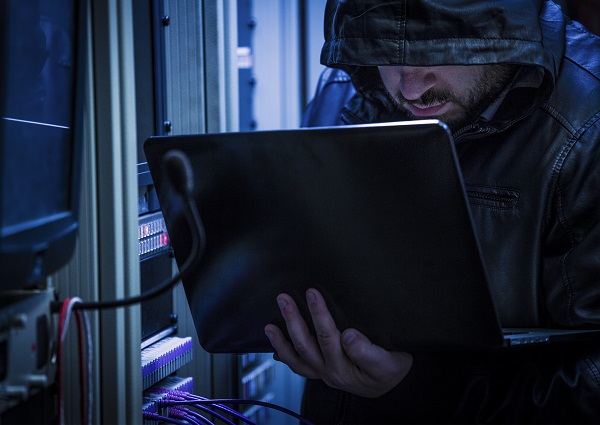
It is clear that when the NATO Secretary General says that ‘in the realm of cyberspace, our countries are under attack every single day’, prompt action is required. Photo UK Ministry of Defence, Owen Cooban
Critically, NATO member states have been very susceptible to foreign influencing campaigns: open western societies are almost by definition vulnerable to fake or exaggerated (‘a tsunami of refugees’) news. Emphasis on economic problems, fear of immigration, lingering anti-US sentiment, it all works. Such actions are only as effective as the perception of these actions: a terrorist’s greatest weapon is not the attack itself, but the fear it causes. It is this fear that paralyses a society. Thus, building a society’s capacity to resist external influencing is increasingly essential in today’s world. This, too, is not exclusively a job for the military, but it can play a key role in this.[29]
Therefore, if there is a strong desire to increase Europe’s capabilities for dealing with its own security challenges, it is this area that deserves more attention. It is not wise to use the increased support for higher defence budgets to merely buy modernised versions of conventional vehicles. More planes for the air force, more ships for the navy, and new tanks for the army are essential indeed, but so are capabilities that are harder to visualise, such as those needed to manoeuvre in the cyber and information domains. The German Cyber and Information Domain Command and the UK 77 Brigade are two examples of capability development in this area, but notably the two initiatives differ substantially. The German initiative unites the various units and agencies working in the cyber domain under one roof, thus placing the cyber domain next to the land, air and maritime domains. The British approach is more effect-centric, as it aims to bring together influencing capabilities.
Conclusion
Given the current hybrid environment it is more important than ever for NATO to demonstrate cohesion and stand strong together against an enemy’s attempt to drive a wedge between the member states. Therefore, more energy must be spent on strategic thinking and on developing solid mechanisms for multinational and cross-domain synergy to successfully manoeuvre in the hybrid environment. In this essay, guidance has been provided on which measures European NATO countries could take.
First, given the hybrid nature of foreseeable conflicts, the comprehensive approach should be embraced. This can neither be done by the nations on their own, nor solely within the military domain. Manoeuvring in the hybrid environment entails close cross-cooperation and synchronisation with other actors. Therefore, a deepened integration with European partners as well as with non-military sectors is a crucial element in any defence strategy. Jointness should be fully embedded in military thinking, and conventional fighting must be coupled with comprehensive thinking. 1GNC, which can take on the role of JIMP integrator, serves as an example of how the comprehensive approach could be done. Demonstrating through a synchronised approach that tomorrow’s opponents can be dissuaded from attacking; that is deterrence in the hybrid environment.
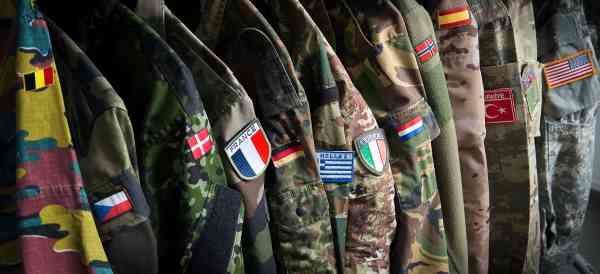
NATO should have the courage to recognise the biggest weakness of it’s European member states: the national militaries. Photo NATO
Moreover, NATO countries should step up their war fighting capabilities and take deterrence seriously, both militarily and politically. They already have an enormous combined strength in all PMESII (Political, Military, Economic, Social, Infrastructure and Information) domains that can be used for manoeuvring in the hybrid environment. For Europe especially, the letters E and S are its sources of strength. However, NATO should also have the courage to recognise the biggest weakness of its European member states: the national militaries. So, the current security landscape urgently requires serious investments and development in a wide variety of military capability areas. Next to restoring conventional capabilities, complementary new and innovative capabilities are required. Especially in the cyber and information domains capabilities are urgently needed. With regard to non-military deterrence, investing in societal resilience is necessary to show the population that the military is there to help. For this to work, the military must firmly and visibly return to the centre of society and cooperate closely with civil partners.
Lastly, the development of European (both national and transnational) strategic thinking is essential for strengthening NATO. Solely increasing defence spending to two per cent, although vital, will not solve all of the alliance’s problems and does not provide a stable foundation for a shared security strategy. NATO and its European member states should define their interests, and then develop strategies to protect these interests. The European states should accept their responsibility within NATO and balance out the US. Europe should thus get its act together: it is a requirement for the long–term survival of the alliance.
With the growth towards the two per cent investments should go to a healthy mix of enablers, concepts for cooperation, non-conventional means, and sophisticated fighting forces. Ultimately, this must lead towards a more self-sufficient military in Europe. But Europe should not only pay attention to spending its money wisely; perhaps more importantly, it should focus on assuming responsibilities. Europe must accept that security comes at a price. Therefore, all NATO member states must contribute fairly and accept responsibility for maintaining the alliance’s cohesion, because that continues to be its greatest strength. This will not be easy, but the prospects are promising. Chancellor Merkel nicely summed this up in Munich. Responding to the title ‘The Great Puzzle: Who Will Pick Up the Pieces?’ she gave a short but hopeful answer: ‘We all will.’[30]
* Lieutenant General Ton van Loon, (ret.), retired in 2013 and has since worked as senior mentor for NATO. He is also involved in the German Institute for Defense and Strategic studies (GIDS) and teaches at the German and Dutch Staff College. He is a board member of the Netherlands Atlantic Association and member of the Dutch Advisory Committee on Migration Affairs (ACVZ). Susan Verstegen MA is a member of staff at the Advisory Group of the Commander of the Royal Netherlands Army. The views and opinions expressed in this article are those of the authors and do not necessarily reflect the official policy or position of the authors’ employer(s) or organization(s).
[1] Munich Security Conference, Munich Security Report 2019. The Great Puzzle: Who Will Pick Up the Pieces?, 5-6, https://www.securityconference.de/en/publications/munich-security-report/munich-security-report-2019/#c11097.
[2] Churchill Lecture by Mark Rutte, ‘The EU: from the power of principles towards principles and power’, Rijksoverheid.nl. See: https://www.government.nl/documents/speeches/2019/02/13/churchill-lecture-by-prime-minister-mark-rutte-europa-institut-at-the-university-of-zurich.
[3] A.J.C. Selhorst, ‘Russia’s Perception Warfare. The development of Gerasimov’s doctrine in Estonia and Georgia and its application in Ukraine’, in: Militaire Spectator 185 (2016) (4) 148-164. https://www.militairespectator.nl/thema/strategie-operaties/artikel/russias-perception-warfare.
[4] Importantly, this essay discusses those matters that are in the authors’ opinions most pressing, and so, this essay is not meant to be a complete description.
[5] As a substantial part of debates within NATO revolve around the return to territorial alliance defence, this essay focuses on that specific threat. It is important to note this does not mean that threats emanating from other regions or domains should be considered less significant.
[6] Federica Mogherini, ‘Keynote speech during Inter-Parliamentary Conference for the EU’s Common Foreign, Security and Defence Policy’ (March 4, 2015).
[7] Julian Lindley-French, NDC Conference Report, ‘NATO and New Ways of Warfare: Defeating Hybrid Threats’, NATO Defense College, No. 3 (May 2015): 1.
[8] Eric Lipton, David E. Sanger and Scott Shane, ‘The Perfect Weapon: How Russian Cyberpower Invaded the U.S.’, in: The New York Times (December 13, 2016).
[9] Lipton, Sanger and Shane, ‘The Perfect Weapon.’
[10] NATO purposely uses ‘a comprehensive approach’ to underline that there isn’t one way of conducting the comprehensive approach. Russia uses an aggressive version, which we now often refer to as hybrid. China uses yet another, perhaps somewhat subtler version.
[11] But what is Europe? Europe is not the EU and European NATO allies do not cover all of Europe. When talking about the military component, it is probably wisest to look at the network of cooperation within NATO when possible, and within the EU when helpful. One thing that should be avoided is building competing structures.
[12] For instance by ensuring that we can import gas from somewhere else too, but also by looking at other energy sources.
[13] For an in-depth analysis of this subject, see Tim Sweijs and Danny Pronk, Interregnum. Strategic Monitor 2018-2019 (HCSS and Clingendael Netherlands Institute of International Relations, February 2019).
[14] ‘Key Quotes Friday – Day 1 of the of the Munich Security Conference 2019’, See: https://www.securityconference.de/en/activities/munich-security-conference/munich-security-conference/msc-2019/key-quotes/.
[15] Importantly, discussions about the ethical boundaries of our reply are needed. However, this essay will not explore this topic.
[16] NATO: ‘A ‘comprehensive approach’ to crises’. See: https://www.nato.int/cps/en/natolive/topics_51633.htm
[17] Exercise Noble Jump 2017 was a NATO exercise with soldiers, vehicles and helicopters to test the Very High Readiness Joint Task Force (VJTF) concept as well as the ability of participant countries to quickly deliver a fighting force.
[18] Franklin D. Kramer, Hans Binnendijk and Dan Hamilton, ‘Defend the Arteries of Society: Countries need new strategies to protect critical networks and infrastructure’, in: U.S. News & World Report (June 9, 2015). See: www.usnews.com/opinion/blogs/world-report/2015/06/09/russia-ukraine-and-the-rise-of-hybrid-warfare.
[19] Research institute TNO (Netherlands Organisation for Applied Scientific Research) is already working in this field with program V1522 on Military Influencing in Integrated Operations.
[20] Royal Netherlands Army, Security through Foresight. The Royal Netherlands Army Vision for the Future (November 2018). See: https://english.defensie.nl/downloads/publications/2018/11/05/vision-of-the-army.
[21] Free translation of a speech by General Volker Wieker at the Bundeswehrtagung in Strausberg (October 2012). Original quote: ‘Wenn der nationale Einsatz die Ausnahme und das Wirken im multinationalen Verbund die Regel ist, müssen unsere Curricula das in der Ausbildung berücksichtigen und den internationalen Verfahren im Führungsprozess zu Grunde legen.’
[22] ‘Foreign Minister Sergey Lavrov’s remarks and answers to media questions at the Munich Security Conference, Munich, February 16, 2019’, The Ministry of Foreign Affairs of the Russian Federation. See: http://www.mid.ru/en/press_service/minister_speeches/-/asset_publisher/7OvQR5KJWVmR/content/id/3520272.
[23] Christian Leuprecht, Joel Sokolsky and Jayson Derow, ‘Paying it forward: Canada’s renewed commitment to NATO’s eFP’, in: Atlantisch perspectief (2018) (5) 17.
[24] Leuprecht, Sokolsky and Derow, ‘Paying it forward’, 17-18.
[25] Minister Jeanine Hennis-Plasschaert, ‘Toespraak bij het seminar ‘Europe’s security and Defence; what next?’’ (Paris, March 11, 2016). See: www.rijksoverheid.nl/documenten/toespraken/2016/03/11/toespraak-van-minister-hennis-plasschaert-bij-het-seminar-europe-s-security-and-defence-what-next-engels.
[26] Uwe Hartmann, ‘The Evolution of the Hybrid Threat, and Resilience as a Countermeasure’, in: NATO Defense College Research Paper no. 139 (September 2017) 8.
[27] ‘Warsaw Summit Communiqué: Issued by the Heads of State and Governments participating in the meeting of the North Atlantic Council in Warsaw on 8-9 July 2016’, NATO, last updated March 29, 2017, https://www.nato.int/cps/en/natohq/official_texts_133169.htm.
[28] Jens Stoltenberg, ‘NATO and Cyber: Time to Raise our Game’, in: Defense News (July 8, 2016). See: https://www.defensenews.com/smr/road-to-warsaw/2016/07/08/nato-and-cyber-time-to-raise-our-game/.
[29] Evidently, this is a joint effort with other government bodies, such as the Ministry of Justice and Security and the Ministry of Internal Affairs.
[30] ‘Rede von Bundeskanzlerin Merkel zur 55. Münchner Sicherheitskonferenz’ (February 16, 2019). See: https://www.bundeskanzlerin.de/bkin-de/aktuelles/rede-von-bundeskanzlerin-merkel-zur-55-muenchner-sicherheitskonferenz-am-16-februar-2019-in-muenchen-1580936.